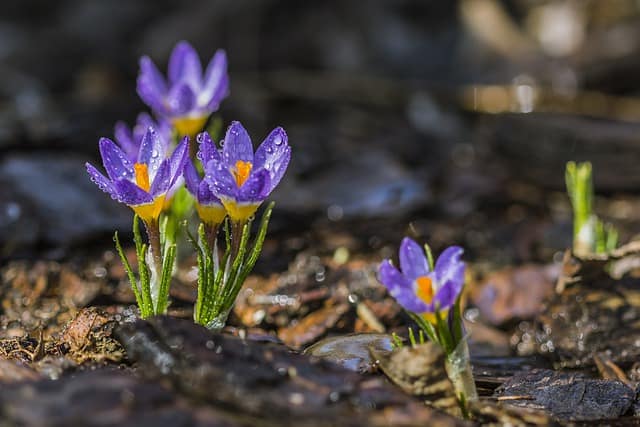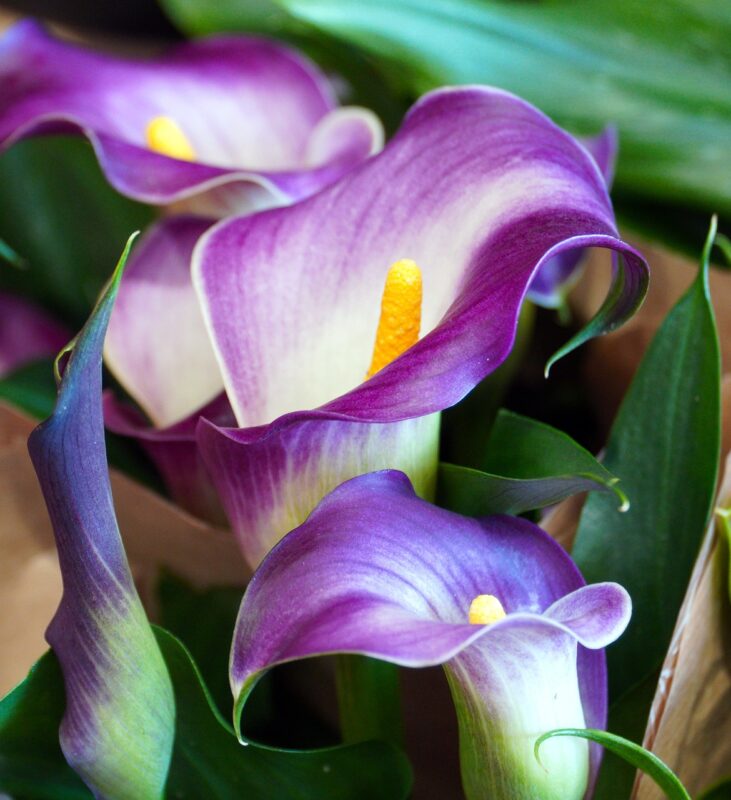Bulbs To Plant In March: A Comprehensive Guide
As the chill of winter begins to recede and the first glimpses of spring appear on the horizon, March signifies a crucial month in the gardening calendar. For many gardeners, it marks the perfect time to start planning and planting bulbs that will bloom beautifully in the coming months. In this guide, we will explore various bulbs to plant in March, detailing their temperature tolerances, ideal planting dates for different USDA zones, and other essential information to ensure a thriving spring garden.
Understanding USDA Zones

Before delving into specific bulbs, it’s essential to understand USDA hardiness zones. The USDA Plant Hardiness Zone Map divides North America into 13 zones based on the average annual minimum temperature. This classification helps gardeners determine which plants are most likely to thrive in their climate. The zones range from Zone 1 (coldest) to Zone 13 (warmest), each representing a different range of minimum temperatures.
Understanding your specific zone will guide you in selecting the right bulbs to plant in March. For example, gardeners in warmer zones can start planting earlier than those in colder zones. Now, let’s explore some fantastic bulb options for each zone.
Zone 3: Early Bloomers for Cold Climates
In USDA Zone 3, where temperatures can dip as low as -40°F in winter, it’s essential to choose hardy bulbs that can withstand the cold. March provides a fleeting window of opportunity for these bulbs as the ground begins to thaw.
Crocus

Temperature Tolerance: Crocuses can tolerate temperatures as low as 15°F to 20°F (-9°C to -6°C).
Planting Dates: Late March is ideal for planting in Zone 3.
Crocuses are among the first flowers to bloom in spring, often piercing through the snow. These small, cup-shaped flowers come in a variety of colors, including purple, white, yellow, and striped varieties. Plant them in well-drained soil in sunny or partially shaded spots. As they naturalize easily, crocuses return year after year, making them a delightful addition to any garden.
Snowdrops (Galanthus nivalis)

Temperature Tolerance: Snowdrops can survive in temperatures as low as -10°F (-23°C).
Planting Dates: Plant in late March for best results.
Snowdrops are iconic spring flowers with nodding, white blooms that often emerge while snow is still on the ground. They prefer well-drained soil and can thrive in partial shade. Snowdrops are also hardy perennials; once established, they will bloom for many years, gradually spreading and creating charming naturalized patches.
Zone 4: Embracing the Thaw
In USDA Zone 4, the winters can be brutal, but by March, you may start to see signs of life returning to the garden. As the temperatures gradually warm, it’s time to plant bulbs that thrive as the soil warms up.
Daffodils (Narcissus)

Temperature Tolerance: Daffodils can tolerate temperatures between 20°F to 30°F (-6°C to -1°C).
Planting Dates: Plant in mid to late March.
Daffodils are reliable perennials that offer a burst of cheerful yellow in early spring. Their trumpet-shaped flowers are not only beautiful but also deer-resistant, making them a favored choice among gardeners. Daffodils thrive in well-drained soils and prefer full sun to partial shade. Once planted, they require minimal care and will multiply over the years, creating vibrant displays.
Tulips (Tulipa)

Temperature Tolerance: Tulips can generally withstand temperatures as low as 20°F (-6°C).
Planting Dates: Plant in late March for best blooming later in spring.
Tulips are among the most popular spring bulbs, known for their vibrant colors and elegant shapes. They prefer well-drained soil and a sunny location. With numerous varieties available, gardeners can choose from early, mid, and late-blooming types to extend their bloom time. Tulips appreciate a cold period during their growing cycle, making them the perfect candidates for a March planting in Zone 4.
Zone 5: The Thrill of Spring
In USDA Zone 5, spring arrives earlier compared to zones 3 and 4. By mid-March, temperatures start to soar, allowing you to plant a wider variety of bulbs.
Hyacinths (Hyacinthus orientalis)

Temperature Tolerance: Hyacinths can tolerate temperatures down to 20°F (-6°C).
Planting Dates: Planting can begin in mid to late March.
Hyacinths are known for their stunning spikes of blossoms and sweet fragrance, adding charm and aroma to the garden. They bloom in a range of colors, including pink, blue, purple, and white. Hyacinths prefer full sun and well-drained soil. After blooming, allow the foliage to die back naturally, as this helps nourish the bulb for next year’s growth.
Allium

Temperature Tolerance: Alliums can tolerate temperatures of 20°F (-6°C).
Planting Dates: Plant in late March to early April.
Alliums are striking ornamental onions that produce large globes of flowers atop tall stems. They make excellent cut flowers and can add height to garden beds. Plant them in well-drained soil and full sun for best results. Alliums are relatively low-maintenance and thrive when left undisturbed.
Zone 6: Warming Up for Blooms
As we move south to USDA Zone 6, the arrival of spring allows for even more varied planting options. In this zone, you can begin planting bulbs as early as mid-March.
Asiatic Lilies (Lilium asiatic)

Temperature Tolerance: Asiatic Lilies tolerate temperatures down to 15°F (-9°C).
Planting Dates: Mid to late March is ideal.
Asiatic lilies are known for their large, vibrant blooms that can add a spectacular touch to any garden. They thrive in sunny locations with well-drained soil. Carefully plant them at a depth of about 6 inches, and with proper care, they will return annually, producing even more blooms each year.
Dutch Iris (Iris hollandica)

Temperature Tolerance: Dutch iris tolerate temperatures down to 20°F (-6°C).
Planting Dates: Mid-March is suitable for planting.
Dutch irises are celebrated for their elegant blooms and slender stalks. Available in a variety of colors, including purple, blue, yellow, and white, these iris types are perfect for gardens and suitable for cut flowers. They thrive in sunny areas with good drainage, and their unique blooms typically rise toward the end of spring.
Zone 7: A Bounty of Options
By March in USDA Zone 7, most gardeners aim for a potent garden display. Temperatures begin to warm, allowing for even more bulb varieties to flourish.
Bulbous Buttercup (Ranunculus ficaria)

Temperature Tolerance: Bulbous buttercups handle temperatures as low as 15°F (-9°C).
Planting Dates: Late March is a good time.
Bulbous buttercups have glossy yellow flowers that brighten any garden. These vigorous perennials thrive in fertile, well-drained soil and prefer partial shade to full sun. While they can spread quite vigorously, many gardeners appreciate their cheerful blooms that herald the arrival of spring.
Peonies (Paeonia)

Temperature Tolerance: Peonies can withstand cold down to -30°F (-34°C).
Planting Dates: Late March is ideal for planting.
Though technically not a bulb, peonies grow from tuberous roots and deserve mention here. Known for their large, fragrant blooms in various shades, including pink, white, and red, peonies are a favorite for cut flower arrangements. They flourish in well-drained, rich soil and full sun. Peonies can take a few years to establish, but once they do, they are long-lived perennials that will delight for decades.
Zone 8: Embracing Early Bloomers
March in USDA Zone 8 can feel like a jumpstart to spring, as warmer temperatures allow for a plethora of planting opportunities.
Calla Lilies (Zantedeschia)

Temperature Tolerance: Calla lilies thrive in temperatures between 60°F to 70°F (15°C to 21°C).
Planting Dates: Plant in early to mid-March.
Calla lilies are famed for their unique funnel-shaped flowers and lush foliage. While they can tolerate slight frost, they thrive in warm weather. These bulbs prefer well-draining soil and ample sunlight. Plant them in garden beds or pots, and once they bloom, enjoy their elegant display throughout the warmer months.
Amaryllis belladonna

Temperature Tolerance: Naked ladies prefer temperatures above 50°F (10°C).
Planting Dates: Early to mid-March is suitable.
Naked ladies, also known as belladonna lilies, provide a spectacular burst of color with their trumpet-shaped flowers that bloom in late summer. The leaves sprout in spring but die back before the flowers appear, creating a fascinating growth cycle. These bulbs enjoy full sun and well-drained soil, making them an excellent choice for a southern garden.
Zone 9: The Abundance of Spring
Gardeners in USDA Zone 9 are blessed with warm temperatures in March, allowing for an even broader range of ornamental bulbs to be planted.
Gladiolus (Gladiolus hortulanus)

Temperature Tolerance: Gladiolus do best in temperatures above 50°F (10°C).
Planting Dates: Plant in mid to late March.
Gladiolus is celebrated for its tall spikes adorned with stunning flowers in various colors. These bulbs thrive in full sun and well-drained soil. As they grow, they need support due to their height, but once established, they provide beautiful vertical interest in any garden setting.
Canna Lilies (Canna indica)

Temperature Tolerance: Cannas prefer warm conditions, thriving in temperatures 60°F (15°C) and above.
Planting Dates: Late March is ideal.
Canna lilies are known for their showy red, orange, and yellow blooms against broad green leaves. They thrive in rich, moist soil and full sun, making them perfect for garden beds and borders. Plant them in clumps for a more substantial impact, and they will reward you with continuous blooms from summer through fall.
Zone 10: Soaking in the Sunshine
In USDA Zone 10, March means spring is nearly in full swing, and gardeners have a wealth of options to choose from.
Tuberous Begonias (Begonia tuberhybrida)

Temperature Tolerance: Tuberous begonias thrive in temperatures above 50°F (10°C).
Planting Dates: Begin planting in early March.
Tuberous begonias are prized for their lush blooms that come in various colors, from soft pastels to bright shades. They do best in partial shade and well-drained soil. These plants require some humidity, making them perfect for subtropical gardens. They can provide stunning displays hung in baskets or planted directly into the garden bed.
Lily of the Nile (Agapanthus)

Temperature Tolerance: Agapanthus thrive in temperatures as low as 20°F (-6°C) but perform best in warm conditions.
Planting Dates: Plant in mid-March.
Lily of the Nile features dense clusters of blue or white flowers that bloom in the summer. They prefer full sun and fertile, well-drained soil. These hardy plants are drought-tolerant once established and will add a tropical flair to any garden landscape.
Final Thoughts
\
Planting bulbs in March is an incredibly rewarding endeavor, as the anticipation of spring blooms fills the hearts of gardeners everywhere. By understanding your specific USDA growing zone, you can select the right bulbs to thrive in your climate.
From the puncturing first blossoms of crocuses in chilly zones to the vibrant displays of cannas and gladiolus in warmer areas, there’s a world of bulbous beauty waiting to burst forth. With careful planning and attention, your March plantings will set the stage for a colorful, vibrant spring garden that delights not only the gardener but all who cross its path. Remember to choose your bulbs wisely, and enjoy nurturing your garden into a blooming masterpiece.





